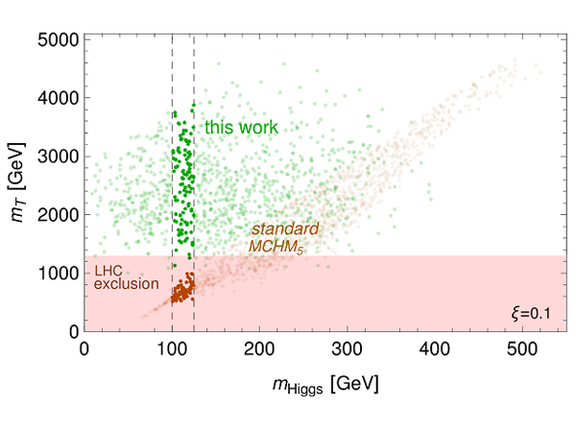In our understanding of nature, elementary particles become massive due to the famous Higgs mechanism. The corresponding Higgs particle has been finally discovered at the CERN Large Hadron Collider (LHC) in 2012. Notwithstanding, its small mass is in conflict with general physical arguments. An attractive idea that solves this issue is to realize the Higgs boson as a composite particle, resolvable at small distances. However, the standard incarnations of this approach are in increasingly pressing tension with the missing signals of partner particles of the top quark at the LHC, threatening the idea of a natural composite Higgs.
Theoreticians at the Max Planck Institute for Nuclear Physics now proposed an elegant means to address this issue, entertaining a new symmetry structure in the fermion sector of the composite Higgs framework. This allows for a massive, but light, Higgs – in agreement with observation – while at the same time reproducing the correct top-quark mass and avoiding problematic ultra-light top partners, see the green vs. brown points in the plot. “We thus showed how to save minimal composite models, resolving the tension with current LHC limits, with the generic realizations still being detectable at the LHC upgrade or a future 100 TeV collider”, concludes group leader Florian Goertz.
Original publication:
Softened symmetry breaking in composite Higgs models, S. Blasi and F. Goertz, Phys. Rev. Lett. 123 (2019), DOI: 10.1103/PhysRevLett.123.221801
